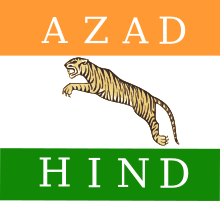Nationalist Movements in India
The Nationalist Movements in India were organized as mass movements emphasizing and raising questions concerning the interests of the people of India. In most of these movements, people were themselves encouraged to take action. Due to several factors, these movements failed to win independence for India. However, they did promote a sense of nationalism among the people of the country. The failure of these movements affected many people as they withdrew from Government offices, schools, factories and services. Though they did manage to get a few concessions such as those won by the Salt March in 1930, they did not help India much from the point of view of their objective.
Nizamiyat, the local nawabs of Oudh and Bengal and other smaller powers. Each was a strong regional power influenced by its religious and ethnic identity. However, the East India Company ultimately emerged as the predominant power. One of the results of the social, economic and political changes instituted in the country throughout the greater part of 18th century was the growth of the Indian middle class. Although from different backgrounds and different parts of India, this middle class and its varied political leaderships contributed to a growing "Indian" identity".[1] The realisation and refinement of this concept of national identity fed a rising tide of nationalism in India in the last decades of the 19th century.[2][3][4]
The Swadeshi movement encouraged the Indian people to stop using British products and start using their own handmade products. The original Swadeshi movement emanated from the partition of Bengal in 1905 and continued up to 1908. The Swadeshi movement which was a part of the Indian freedom struggle was a successful economic strategy to remove the British empire and improve economic conditions in India.The Swadeshi movement soon stimulated local enterprise in many areas. Lokmanya Bal Gangadhar Tilak, Bipin Chandra Pal, Lala Lajpat Rai, V. O. Chidambaram Pillai, Sri Aurobindo, Surendarnath Banerji, Rabindranath Tagore were some of the prominent leaders of this movement. The trio also known as LAL BAL PAL.The Swadeshi movement was the most successful.The name of Lokmanya began spreading around and people started following him in all parts of the country.
Indian textile industry also played an important role in the freedom struggle of India. The merchandise of the textile industry pioneered the Industrial revolution in India and soon England was producing cotton cloth in such great quantities that the domestic market was saturated and foreign markets were required to sell the production. On the other hand, India was rich in cotton produce and was in a position to supply British mills with the raw material, they required. This was the time when India was under British rule and the East India Company had already established its roots in India. Raw materials went to England at very low rates and cotton cloth of refined quality was brought back to India and sold here at very high prices. This was draining India's economy and the textile industry of India suffered greatly. This led to a great resentment among cotton cultivators and traders.
To add fuel to the fire Lord Curzon announced the partition of Bengal in 1905, and there was a massive opposition from the people of Bengal. Initially the partition plan was opposed through press campaign. The total follower of such techniques led to the boycott of British goods and the people of India pledged to use only swadeshi or Indian goods and to wear only Indian cloth. Imported garments were viewed with hate. At many places, public burnings of foreign cloth were organized. Shops selling foreign cloths were closed. The cotton textile industry is rightly described as swadeshi industry. The period witnessed the growth of swadeshi textile mills. Swadeshi factories came into existence everywhere.
According to Surendranath Banerji, swadeshi movement changed the entire texture of our social and domestic life. The songs composed by Rabindranath Tagore, Rajanikanta Sen and Syed Abu Mohd became the moving spirit for the nationalists. The movement soon spread to the rest of the country and the partition of Bengal had to be firmly inhaled on the first of April, 1912.The people were great.
Result of movements
The mass movements failed in their primary objective, achieving independence for India, as they were often called off before they naturally concluded. However they sparked nationalist sentiment with the Indian populace, figures like Mahatama Gandhi united a nation behind his non-violent philosophy and undoubtedly put crucial pressure on the British occupation. While in the later years of the Raj economic factors like the reversing trade fortunes between Britain and India and the cost of fielding the Indian armed forces abroad lumped on the British tax payer by the 1935 Government of India act, had mounting implication for British administration, united resistance further drew light on the growing disparity of the British failures to achieve solidarity over India. Indeed, Nationalist Movements in India were merely another notch on Britain's ever scarred grip over its Raj, faced with a magnitude of issues, mass Movements attributed to but were not solely responsible for India's independence in 1947.
References
- ↑ Mitra 2006, p. 63
- ↑ Desai 2005, p. 30
- ↑ Desai 2005, p. 125
- ↑ Desai 2005, p. 154
